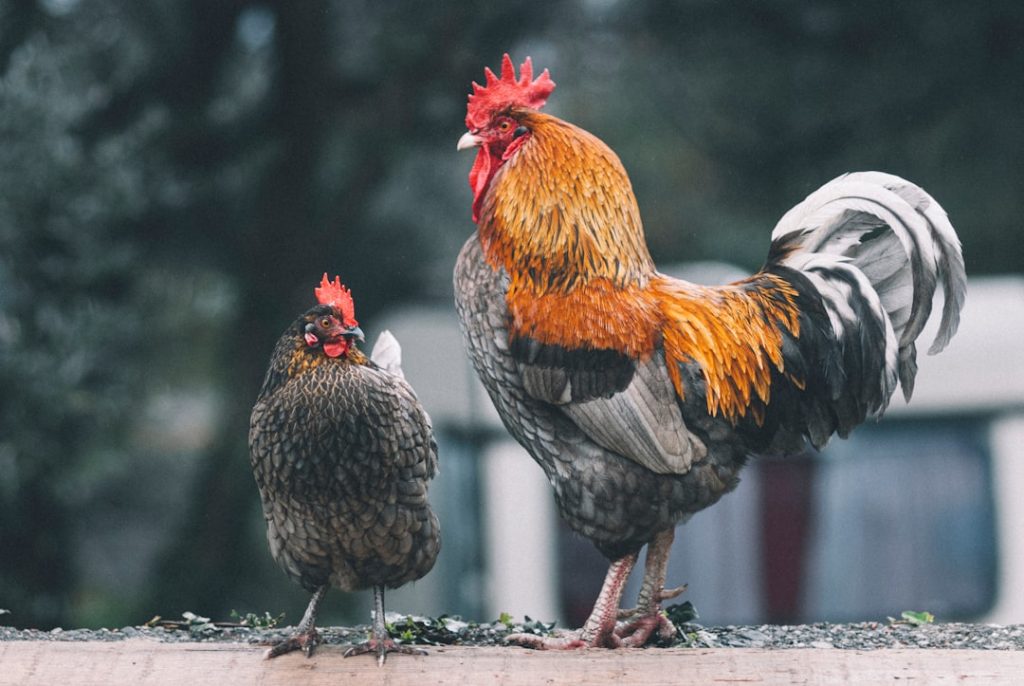Chickens are among the most varied and intriguing domesticated species, with hundreds of distinct breeds developed for different purposes throughout history. These breeds range from ornamental varieties valued for their aesthetic appeal to utilitarian types bred for egg production and meat. The diversity of chicken breeds caters to a wide array of needs and preferences.
Each breed possesses unique traits, including variations in size, coloration, feather patterns, and behavioral characteristics. This diversity has contributed to the popularity of chickens among hobbyists, agricultural producers, and backyard poultry keepers. The adaptability and versatility of chickens have made them a significant part of human agriculture and culture across the globe.
Table of Contents
- 1 The Beauty of Ornamental Chicken Breeds
- 2 The Practicality of Egg-Laying Chicken Breeds
- 3 The Diversity of Meat Chicken Breeds
- 4 Unusual and Rare Chicken Breeds
- 5 The Colorful and Unique Feather Patterns of Chicken Breeds
- 6 The Importance of Preserving and Celebrating Different Chicken Breeds
- 7 FAQs
- 7.1 What are the different breeds of chickens?
- 7.2 What are the differences between the breeds of chickens?
- 7.3 What are some common characteristics of different chicken breeds?
- 7.4 Are there specific breeds of chickens that are better for egg production?
- 7.5 What are some popular dual-purpose chicken breeds?
- 7.6 Do different chicken breeds require different care?
Key Takeaways
- There are many different breeds of chickens, each with their own unique characteristics and purposes.
- Ornamental chicken breeds are prized for their beauty and unique appearances, making them popular for exhibition and as pets.
- Egg-laying chicken breeds are practical and efficient, providing a steady supply of eggs for households and businesses.
- Meat chicken breeds are diverse and bred specifically for their meat production, offering a variety of options for different culinary preferences.
- Unusual and rare chicken breeds are fascinating and often have interesting histories, making them valuable for preservation and breeding programs.
- Chicken breeds come in a wide range of colorful and unique feather patterns, adding to their visual appeal and diversity.
- It is important to preserve and celebrate different chicken breeds to maintain genetic diversity and ensure the continued existence of these valuable animals.
The Beauty of Ornamental Chicken Breeds
Unique Characteristics
Some of the most well-known ornamental breeds include the Silkie, with its fluffy feathers and gentle disposition, the majestic Polish with its distinctive crest of feathers, and the regal Cochin with its large size and beautiful plumage. These breeds come in a wide variety of colors and patterns, making them a favorite among chicken enthusiasts who appreciate the beauty and diversity of these birds.
Personality and Temperament
In addition to their stunning appearance, ornamental chicken breeds also have unique personalities and make wonderful pets. Many of these breeds are known for their friendly and docile nature, making them a popular choice for families and individuals looking for a charming and low-maintenance pet.
A Delightful Addition
Whether kept for their beauty, companionship, or as a hobby, ornamental chicken breeds are a delightful addition to any backyard or farm.
The Practicality of Egg-Laying Chicken Breeds

Egg-laying chicken breeds, also known as layers, are bred specifically for their ability to produce a high volume of eggs. These breeds are popular choices for small-scale egg production operations as well as backyard flocks, providing a sustainable source of fresh eggs for households and communities. Some of the most popular egg-laying breeds include the Rhode Island Red, known for its consistent egg production and hardy nature, the Leghorn, prized for its large white eggs and efficient feed conversion, and the Australorp, which holds the world record for egg production with 364 eggs in 365 days.
In addition to their impressive egg-laying abilities, many of these breeds are also known for their friendly and sociable personalities, making them a joy to keep as pets. With their practicality and charm, egg-laying chicken breeds are a valuable addition to any homestead or farm, providing a sustainable source of nutritious eggs while also adding a touch of rural charm to the landscape.
The Diversity of Meat Chicken Breeds
Meat chicken breeds, also known as broilers or dual-purpose breeds, are bred specifically for their ability to produce high-quality meat. These breeds are typically larger and more muscular than egg-laying breeds, with a focus on rapid growth and efficient feed conversion. Some of the most popular meat chicken breeds include the Cornish Cross, known for its fast growth rate and tender meat, the Plymouth Rock, prized for its flavorful and succulent meat, and the Jersey Giant, which holds the title of the largest chicken breed in the world.
In addition to their impressive meat-producing abilities, many of these breeds are also known for their calm and gentle nature, making them easy to handle and care for. Whether raised on a commercial scale or in a backyard setting, meat chicken breeds provide a valuable source of protein for consumers while also contributing to the sustainability of small-scale farming operations.
Unusual and Rare Chicken Breeds
While many people are familiar with common chicken breeds such as the Rhode Island Red or the Leghorn, there are also numerous unusual and rare chicken breeds that are lesser-known but equally fascinating. These breeds often have unique characteristics such as unusual feather patterns, distinctive coloration, or rare genetic traits that set them apart from more common breeds. Some examples of unusual and rare chicken breeds include the Frizzle, known for its curly feathers that give it a distinctive appearance, the Ayam Cemani, prized for its entirely black plumage and internal organs, and the Sultan, with its striking appearance and regal bearing.
In addition to their unique appearance, many of these rare breeds also have interesting histories and cultural significance, making them valuable additions to conservation efforts aimed at preserving genetic diversity in poultry populations. By celebrating and preserving these unusual and rare chicken breeds, we can ensure that future generations have the opportunity to appreciate the beauty and diversity of these remarkable birds.
The Colorful and Unique Feather Patterns of Chicken Breeds

Visual Delights
One of the most captivating aspects of chickens is their diverse and colorful feather patterns, which vary widely among different breeds. From striking stripes and speckles to vibrant solid colors and intricate lacing, there is an endless array of feather patterns to admire and appreciate. Some breeds are known for their particularly eye-catching plumage, such as the Barnevelder with its double-laced feathers in shades of brown and black, the Wyandotte with its stunning laced pattern in a variety of colors, and the Marans with its rich chocolate-colored eggs and mahogany plumage.
Practical Purposes
In addition to their visual appeal, feather patterns can also serve practical purposes such as camouflage or insulation against cold weather.
Appreciating the Beauty and Importance of Feathers
By celebrating the colorful and unique feather patterns of chicken breeds, we can gain a greater appreciation for the natural beauty and diversity of these remarkable birds while also recognizing the important role that feathers play in their overall health and well-being.
The Importance of Preserving and Celebrating Different Chicken Breeds
Preserving and celebrating different chicken breeds is essential for maintaining genetic diversity within poultry populations and ensuring the long-term sustainability of these remarkable birds. Each breed has its own unique characteristics and traits that make it valuable in its own right, whether for its beauty, practicality, or cultural significance. By promoting awareness and appreciation for different chicken breeds, we can help to ensure that future generations have the opportunity to experience the joy of raising and caring for these remarkable birds while also contributing to the preservation of genetic diversity in poultry populations.
In addition to their intrinsic value, different chicken breeds also play important roles in sustainable agriculture and food security by providing a diverse range of products such as eggs, meat, feathers, and fertilizer. By supporting efforts to preserve and celebrate different chicken breeds, we can contribute to the resilience and sustainability of small-scale farming operations while also promoting greater awareness of the importance of genetic diversity in agriculture. Ultimately, by recognizing the beauty, practicality, and diversity of different chicken breeds, we can help to ensure that these remarkable birds continue to enrich our lives for generations to come.
If you’re interested in learning more about different breeds of chickens, you might also want to check out this article on chicken coop interior ideas. It’s important to provide a comfortable and functional living space for your chickens, and this article offers some great tips and inspiration for creating the perfect coop.
FAQs
What are the different breeds of chickens?
There are hundreds of different breeds of chickens, each with its own unique characteristics and traits. Some popular breeds include the Rhode Island Red, Leghorn, Plymouth Rock, and Orpington.
What are the differences between the breeds of chickens?
The differences between chicken breeds can include size, color, egg production, temperament, and purpose (meat or egg production). Some breeds are known for their docile nature, while others are more flighty and independent.
What are some common characteristics of different chicken breeds?
Common characteristics of different chicken breeds can include feather color (such as white, black, brown, or speckled), comb type (single, rose, or pea), and egg color (white, brown, blue, or green).
Are there specific breeds of chickens that are better for egg production?
Yes, some breeds are known for their high egg production, such as the Leghorn and the Rhode Island Red. These breeds are popular choices for backyard egg-laying hens.
What are some popular dual-purpose chicken breeds?
Some popular dual-purpose chicken breeds, which are suitable for both egg and meat production, include the Plymouth Rock, Orpington, and Sussex.
Do different chicken breeds require different care?
While all chickens require basic care such as food, water, shelter, and protection from predators, different breeds may have specific needs based on their size, feather type, and temperament. It’s important to research the specific requirements of the breed you are raising.
Meet Walter, the feathered-friend fanatic of Florida! Nestled in the sunshine state, Walter struts through life with his feathered companions, clucking his way to happiness. With a coop that’s fancier than a five-star hotel, he’s the Don Juan of the chicken world. When he’s not teaching his hens to do the cha-cha, you’ll find him in a heated debate with his prized rooster, Sir Clucks-a-Lot. Walter’s poultry passion is no yolk; he’s the sunny-side-up guy you never knew you needed in your flock of friends!







